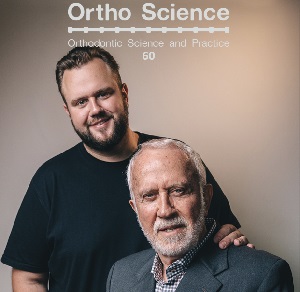Vol. 15 – Number 60 – 2022 Na Visão D’elas Page 80-87 Evaluation of orthodontists’ knowledge concerning orthodontic movement in traumatized teeth Leniana Santos Neves¹ Letícia Teixeira Vieira² Esdras de Campos França³ Marcelo de Araújo Lombardi4 Rodrigo Hermont Cançado1 Juliana Vilela Bastos5 Alexandre Fortes Drummond6 Abstract The aim of the present study was to evaluate the knowledge of orthodontists of the Brazilian Orthodontics and Facial Orthopedics Association – Minas Gerais section (ABOR/MG) in relation to orthodontic movement of traumatized teeth. The research was conducted with an electronic questionnaire answered through the Google Forms® platform and sent to the participants by e-mail. A number of 21 objective questions, based on Tondelli’s et al.1 (2010) work, were divided into 3 parts: the profile data of the professionals composed part 1; part 2 collected information on the knowledge of dentoalveolar trauma; and part 3 evaluated the professional’s knowledge in relation to the orthodontic movement of traumatized teeth. The sample of the study was a total of 289 orthodontists registered in the ABOR/MG association: 93 of these answered the questionnaire (32%), in which 51% were men and 49% were women. In terms of professional qualification and education, most participants (58,1%) had Specialization and 53,8% had more than 10 years of experience in the area of Orthodontics. In total, 53,8% declared having practiced exclusively Orthodontics in their clinics and 91,4% have already treated patients with dental trauma. However, 21,5% affirmed that only sometimes they ask the patients about the previous trauma history. The type of trauma with the most correct answers was avulsion (95,7%) and subluxation was the lesion with the lowest number of adequate response (75,3%). Most orthodontics has a level of knowledge in regard to dental trauma considered to be satisfactory. On the other hand, their conduct in orthodontic movement is inadequate and more capacitation and training of these professionals are necessary for the correct treatment and prognosis of the traumatized patient. Descriptors: Tooth injuries, Orthodontics, permanent dentition. 1 MSc and PhD in Orthodontics – FOB-USP, Adjunct Professor, Department of Restorative Dentistry, Orthodontics area – School of Dentistry – UFMG. 2 Graduation in Dentistry – Faculty of Dentistry – UFMG, Specialist in Orthodontics – IES/MG. 3 Specialist in Orthodontics – UFMG, Master and PhD in Dentistry – Faculty of Dentistry – UFMG, Substitute Professor in the Department of Restorative Dentistry, areas of Orthodontics and Dental Materials – Faculty of Dentistry – UFMG. 4 Specialist in Orthodontics – School of Dentistry – UFMG. 5 Ph.D. in Cellular Biology – ICB-UFMG, Adjunct Professor at the Department of Restorative Dentistry – Faculty of Dentistry – UFMG, Coordinator of the Dental Trauma program – Faculty of Dentistry – UFMG. 6 MSc in Orthodontics – FOB–USP, PhD in Dental Materials – School of Dentistry –UFMG; Associate Professor, Department of Restorative Dentistry – Faculty of Dentistry – UFMG. DOI: 10.24077/2022;1560-23111512
This content is restricted to site members. If you are an existing user, please log in. New users may register below.
LEIA MAIS

